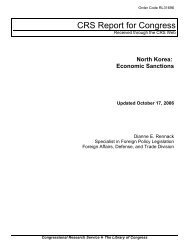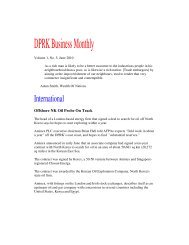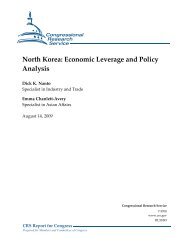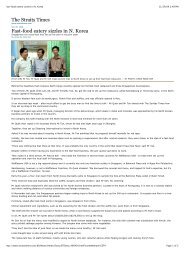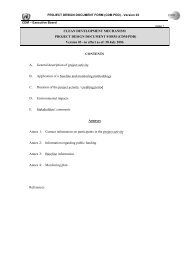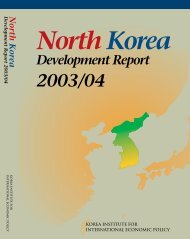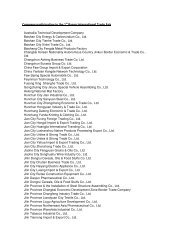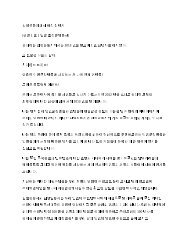North Korean Policy Elites - Defense Technical Information Center
North Korean Policy Elites - Defense Technical Information Center
North Korean Policy Elites - Defense Technical Information Center
You also want an ePaper? Increase the reach of your titles
YUMPU automatically turns print PDFs into web optimized ePapers that Google loves.
interests? Do factions, to the extent that they exist, have a corrosive effect on the leadership? Are<br />
these factions struggling for power or influence? What sources of information are available to the<br />
elite that could have an impact on their political leanings? Finally, what factors affect the lens<br />
through which the leadership receives, assimilates, and interprets information, both internal and<br />
external?<br />
B. SYSTEM DYNAMICS<br />
The generally held view of <strong>North</strong> Korea as a totalitarian state, characterized by an allpowerful<br />
leader, a unitary ideology, and a subservient ruling apparatus, fails to capture the<br />
idiosyncrasy of the system. Since its inception, the <strong>North</strong> <strong>Korean</strong> regime has contained strains of<br />
indirection and informal channels of authority, which at the same time support and weaken the<br />
formal rule of law.<br />
The idiosyncratic nature of the system is best understood in terms of channels of power<br />
and authority. From its inception in 1945, the <strong>North</strong> <strong>Korean</strong> regime has undergone numerous<br />
reconfigurations of power. It has been subject to hidden outside influence, intense factionalism,<br />
one-man dictatorship, two-man dictatorship, and quasi-wartime machinations which blur the<br />
lines between authority and dependence. Each period in <strong>North</strong> <strong>Korean</strong> history has left its residue<br />
on the system. It has created a body of precedents that the leadership can use either to<br />
consolidate power or guard against resurfacing again. With the exception of a limited time<br />
around the period of the 1972 constitution, this power has lacked a true formal structure<br />
governed by rules that outline the relationship between bureaucracies and define the nature of the<br />
leadership.<br />
In order to understand the Kim Chong-il regime, it is critical to realize that it is a product<br />
of <strong>North</strong> <strong>Korean</strong> political history. It is critical to also understand that it is very different from the<br />
Kim Il-sung regime. Whereas Kim Il-sung ruled through charisma and by virtue of his<br />
credentials as a revolutionary leader, Kim Chong-il has no such legitimacy and relies on fear and<br />
secrecy. He is an insider who has been groomed from a very young age to operate within the<br />
Byzantine architecture of the <strong>North</strong> <strong>Korean</strong> regime, with all its intrigues and political challenges.<br />
As a result, he prefers informality and compartmentalization when dealing with the leadership.<br />
Formal channels are often ignored — a practice in sharp contrast to the way Kim Il-sung ran the<br />
regime.<br />
II-2



